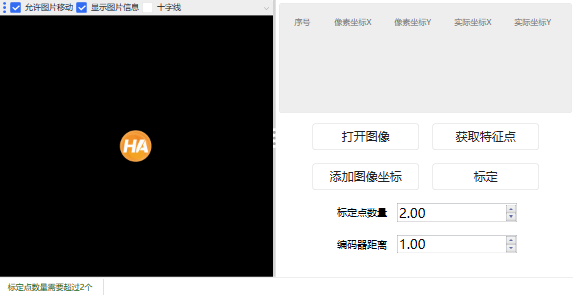WPF 自定义控件绑定数据对象的最佳实践:以 ImageView 为例
在 WPF 中开发自定义控件时,如何优雅地绑定数据对象,是一个经常遇到的问题。最近在实现一个自定义的 ImageView 控件时,我遇到了一个典型场景:
- 控件内部需要使用第三方控件
HSmartWindowControlWPF来显示图像; - 控件需要和业务对象
GraphicInfo绑定,并且要把自身引用回写到GraphicInfo.View; - 控件还要支持在
ItemList(例如ListBox)中批量使用。
本文就以这个案例为例,来总结下最佳实践。
1. 直接使用 DataContext 的问题
最初的写法是这样的:
public override void OnApplyTemplate()
{base.OnApplyTemplate();var hSmart = (HSmartWindowControlWPF)GetTemplateChild("PART_hSmart");hSmart.Loaded += Hsmart_Loaded;hSmart.HMouseMove += HSmart_HMouseMove;if (DataContext is GraphicInfo info){info.View = this; // 子类控件回写到数据对象}
}
在 XAML 里:
<local:ImageView DataContext="{Binding MyGraphic}" />
这种方式虽然能用,但有几个问题:
- 控件内部和外部公用了同一个
DataContext,如果控件内部还需要 MVVM 绑定,会和外部冲突。 - 在
ItemList中使用时不够直观,容易出错。
2. 定义依赖属性(推荐)
更好的做法是为控件定义一个依赖属性,例如 Graphic:
public class ImageView : Control
{static ImageView(){DefaultStyleKeyProperty.OverrideMetadata(typeof(ImageView),new FrameworkPropertyMetadata(typeof(ImageView)));}// 定义依赖属性public GraphicInfo Graphic{get => (GraphicInfo)GetValue(GraphicProperty);set => SetValue(GraphicProperty, value);}public static readonly DependencyProperty GraphicProperty =DependencyProperty.Register(nameof(Graphic), typeof(GraphicInfo), typeof(ImageView),new PropertyMetadata(null, OnGraphicChanged));private static void OnGraphicChanged(DependencyObject d, DependencyPropertyChangedEventArgs e){if (d is ImageView view && e.NewValue is GraphicInfo info){info.View = view; // 在绑定时回写}}public override void OnApplyTemplate(){base.OnApplyTemplate();var hSmart = (HSmartWindowControlWPF)GetTemplateChild("PART_hSmart");if (hSmart != null){hSmart.Loaded += Hsmart_Loaded;hSmart.HMouseMove += HSmart_HMouseMove;}}private void Hsmart_Loaded(object sender, RoutedEventArgs e) { }private void HSmart_HMouseMove(object sender, HMouseEventArgs e) { }
}
这样,控件就有了一个独立的 Graphic 属性,外部绑定时可以很清晰地写:
<local:ImageView Graphic="{Binding MyGraphic}" />
3. 在 ItemList 中使用
在 ListBox 中批量展示多个 GraphicInfo 时,就非常自然:
<ListBox ItemsSource="{Binding Graphics}"><ListBox.ItemTemplate><DataTemplate><local:ImageView Graphic="{Binding}" /></DataTemplate></ListBox.ItemTemplate>
</ListBox>
这里的 Binding 就是每个 GraphicInfo,通过依赖属性绑定到控件,不会和 DataContext 混用。
4. 对比与总结
使用 DataContext 的方式
✅ 简单,少写一个依赖属性
❌ 容易和控件内部 MVVM 冲突
❌ 在 ItemList 中语义不清晰
使用依赖属性的方式
✅ 更加清晰,控件的 DataContext 可以独立使用
✅ 在 ItemList 中使用更自然
✅ 可以在依赖属性的回调里处理逻辑(如回写 View)
最佳实践
- 如果控件只是简单的 UI 展示,内部不需要额外绑定,可以用 DataContext。
- 如果控件要在 ItemList 中使用,或者内部还需要用自己的 DataContext,推荐使用依赖属性。
我个人在项目里最终采用了 依赖属性模式,不仅解耦了数据和视图,还能方便在列表场景下使用。
![[Dify 专栏] 如何通过 Prompt 在 Dify 中模拟 Persona:即便没有专属配置,也能让 AI 扮演角色](http://pic.xiahunao.cn/[Dify 专栏] 如何通过 Prompt 在 Dify 中模拟 Persona:即便没有专属配置,也能让 AI 扮演角色)



)



—— 神经网络实验)
)



)

:非固定高度的容器实现折叠面板效果)

)

